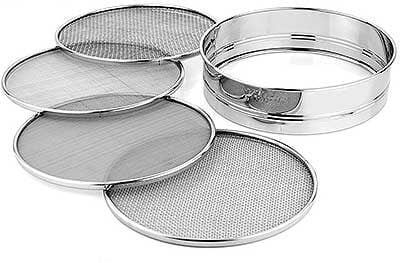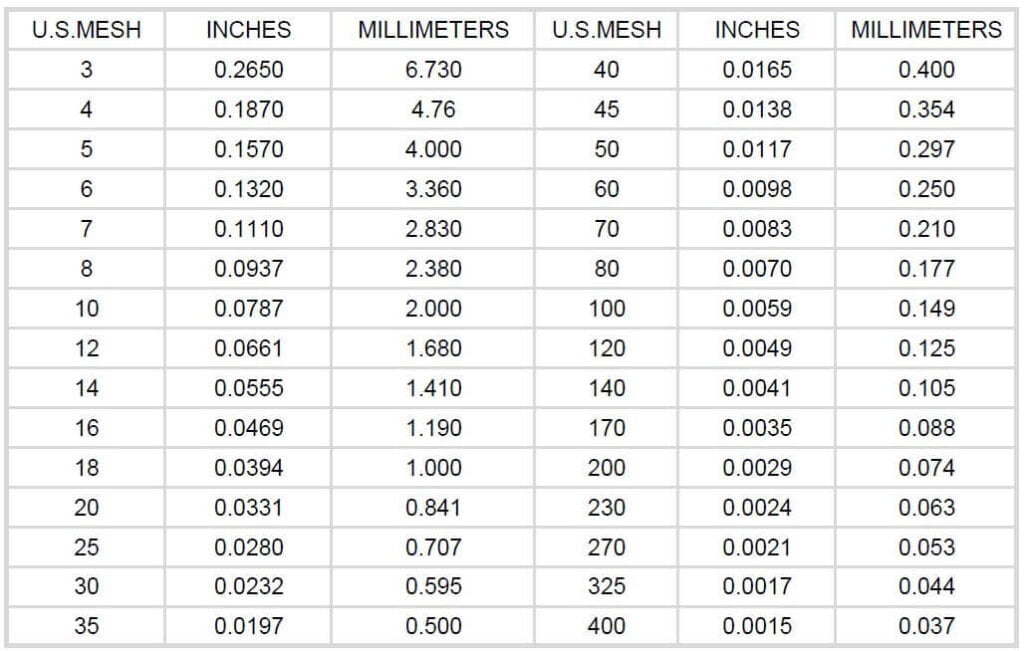Activated carbon mesh size refers to the particle size distribution of activated carbon in granular or powder form. Mesh size is an important consideration when selecting activated carbon for a particular application as it can affect adsorption capacity, flow rate and pressure drop across the carbon bed. In general, smaller particles have a higher surface area per unit volume, which can lead to greater adsorption capacity, but can also lead to higher pressure drop and slower flow rates.
Common mesh sizes for granular activated carbon (GAC) include 8×30, 12×40 and 20×50, where the two numbers indicate the range of mesh sizes through which the carbon particles will pass. For example, an 8×30 mesh activated carbon will pass through an 8 mesh sieve but be retained on a 30 mesh sieve. This means that the particle size will be between 2.36 mm (8 mesh) and 0.595 mm (30 mesh). Smaller mesh sizes, such as 100, 200 or 325 mesh, are usually used for powdered activated carbon (PAC), which has a finer particle size distribution.

The mesh size of activated carbon is usually measured using a series of sieves with different mesh sizes, which are specified in terms of the number of openings per linear inch. The following table is a comparison of mesh sizes.

| U.S.MESH | INCHES | MILLIMETERS |
| 3 | 0.2650 | 6.730 |
| 4 | 0.1870 | 4.76 |
| 5 | 0.1570 | 4.000 |
| 6 | 0.1320 | 3.360 |
| 7 | 0.1110 | 2.830 |
| 8 | 0.0937 | 2.380 |
| 10 | 0.0787 | 2.000 |
| 12 | 0.0661 | 1.680 |
| 14 | 0.0555 | 1.410 |
| 16 | 0.0469 | 1.190 |
| 18 | 0.0394 | 1.000 |
| 20 | 0.0331 | 0.841 |
| 25 | 0.0280 | 0.707 |
| 30 | 0.0232 | 0.595 |
| 35 | 0.0197 | 0.500 |
| 40 | 0.0165 | 0.400 |
| 45 | 0.0138 | 0.354 |
| 50 | 0.0117 | 0.297 |
| 60 | 0.0098 | 0.250 |
| 70 | 0.0083 | 0.210 |
| 80 | 0.0070 | 0.177 |
| 100 | 0.0059 | 0.149 |
| 120 | 0.0049 | 0.125 |
| 140 | 0.0041 | 0.105 |
| 170 | 0.0035 | 0.088 |
| 200 | 0.0029 | 0.074 |
| 230 | 0.0024 | 0.063 |
| 270 | 0.0021 | 0.053 |
| 325 | 0.0017 | 0.044 |
| 400 | 0.0015 | 0.037 |
The choice of mesh size will depend on the specific application and the ideal balance between adsorption capacity, pressure drop and flow rate. For example, in water treatment a larger mesh size may be chosen to minimise pressure drop and maintain a high flow rate, while in air or gas purification a smaller mesh size may be chosen to maximise the adsorption capacity for a particular contaminant.